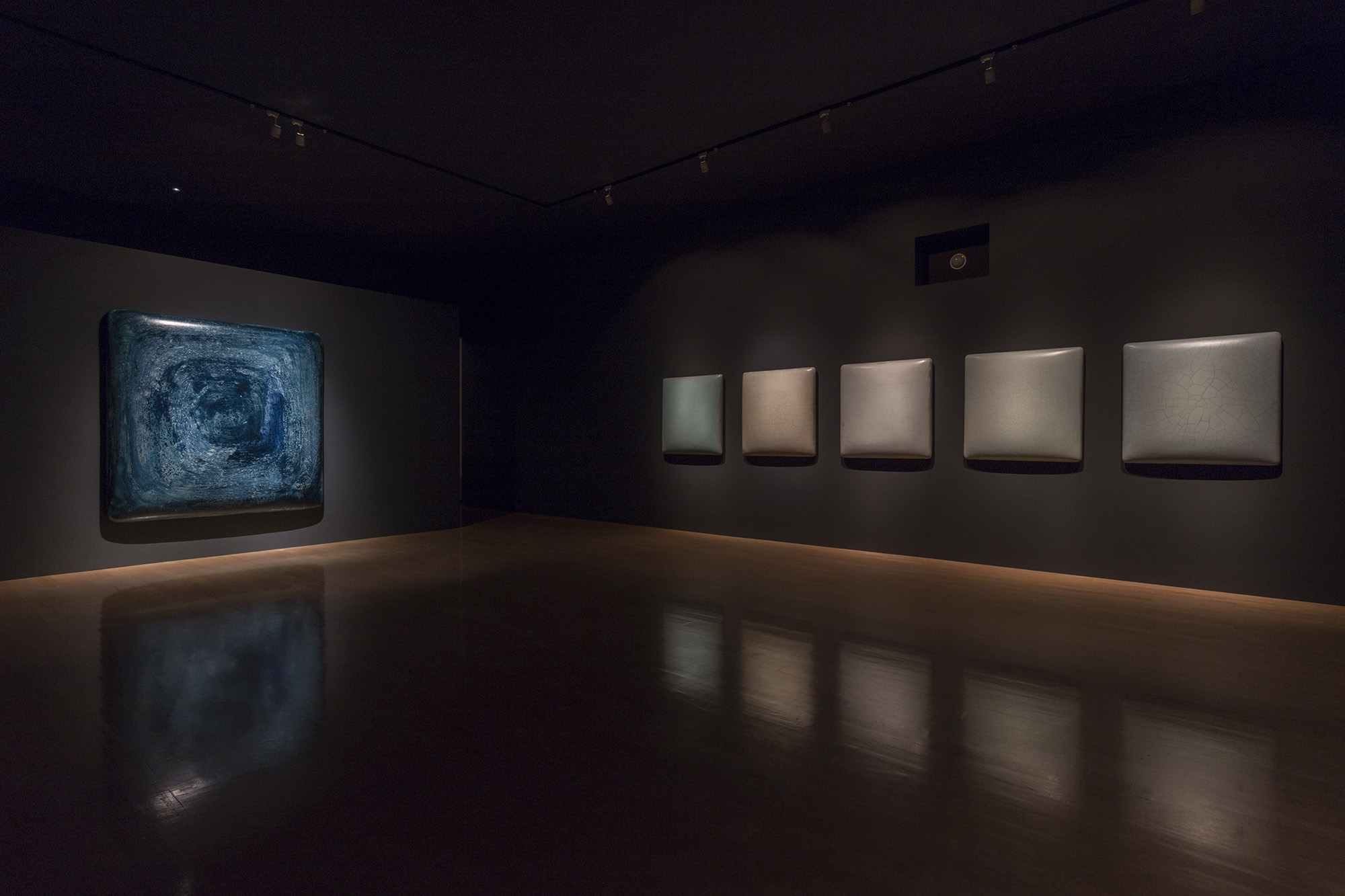Shows
Su Xiaobai’s “And There’s Nothing I Can Do”


Buildings designed by acclaimed Japanese architect Tadao Ando are both feted and known to be austere, perhaps even unrelenting. The Hyogo Prefectural Museum of Art is no exception: Instagrammably dramatic structural moments, lovingly polished concrete surfaces and long vistas make western Japan’s largest museum a site to be reckoned with when planning nuanced exhibitions of artworks. For Chinese artist Su Xiaobai, whose latest institutional solo exhibition was developed with designer Keisuke Toyoda of Noiz Architects—a former apprentice of Ando’s—the space was no less daunting.
After meeting with Su to discuss his upcoming exhibition some weeks ago, I anticipated that his signature minimal abstractions would make for a strong match with Ando’s “spaces for the spirit.” On viewing “And There’s Nothing I Can Do,” I discovered that Su’s deceptively simple canvases sat inside the bespoke, dim rooms like internally lit reliquaries, emitting their own brilliance and a sense of harmonic mystery. Reverence was the word that came to mind. However, there were instances where Su’s works were eclipsed by the show’s spatial arrangement.
The large gallery was bisected by a central room, creating three zones, each connected by a work relating to Summer or Autumn, and a concise selection of Su’s most recent large-scale paintings. On the periphery were two narrow corridors, which contained smaller, and in some ways, more visually complex works. In one of these passageways, for example, were 14 paintings from the “Constant” series (2018) that progressed from light to dark in terms of their colors. The first were white canvases with craquelure surfaces, which viewers could read in relation to Robert Rauschenberg’s all-white paintings, Piet Mondrian’s compositions criss-crossed with black lines, or Chinese porcelain. The second set in the series are black and ocher—earthy hues evocative of Mark Rothko’s works, Greek pottery, and interestingly, the exhibition of Diego Velázquez paintings that overlapped brefly with Su’s at the museum.


Smaller spaces can create an intimacy, but there wasn’t enough room within the corridors to stand back and view the series as totalities. The “Synchrony” series (2015–18)—six oblong, lozenge-like compositions positioned at the periphery of the first gallery—on the other hand, could be overlooked by viewers entirely, relegated as they were behind a wall. This positioning was also a misstep given the spatial characteristics of the series. Su’s canvases all blur the space between painting and object, but “Synchrony” in particular is impossible to view as merely painting. Their oblong shapes and hard edges situate the canvases in space in a way that the smooth contours of his other works do not, acting less as forms that merge with their surroundings, and more as totems that stand defiantly with a weight and mass against the wall.

The central galleries did provide abundant space for the larger works, particularly in the second gallery, where the “Firmament” series (2018) was spotlighted, creating a sublime moment as one turned the corner from the corridors that one wished was repeated throughout the exhibition. However, the gallery spaces had been painted a dark gray color and were otherwise lit sparingly, which, given that Su’s work is about color and the reception of light by the eye, meant that many of the canvases felt undernourished.
Su, who rarely partners with curators for his solo exhibitions, worked on this occasion with a designer, perhaps resulting in an emphasis on space over content. Engaging a curator could have resulted in more sympathetic gestures. For example, Su has an almost scientific approach to painting, and it would have been interesting to see copies of his writing, sketches and material analyses. “And There’s Nothing I Can Do” was a reverential view of his recent work, but was missing a sense of the artist behind it.
There were visual moments of sublimity, awkward corners that reveal dimly humming blocks of color and movement, and details picked out by the light that would have otherwise gone unexplored. Overall, “And There’s Nothing I Can Do,” the title of which refers to the 1969 David Bowie song, Space Oddity, does all that can be done by an artist in the prime of his practice. However, it leaves one wanting for a closer reading of the work, and more meaningful engagement with the artist himself.
Su Xiaobai’s “And There’s Nothing I Can Do” is on view at the Hyogo Prefectural Museum of Art, Kobe, until November 28, 2018.







